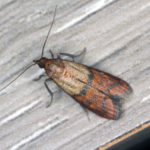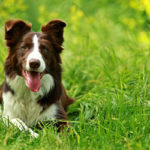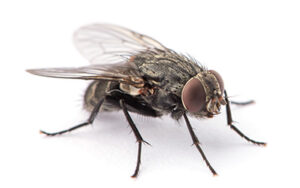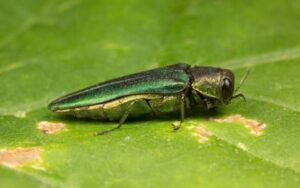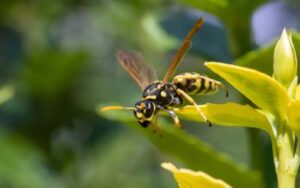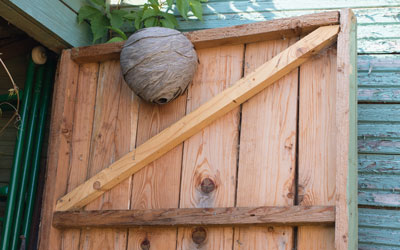
Summertime in Vermont means more insects buzzing around. While this is to be expected, it’s important to keep an eye out for an increase in wasp activity. If you’ve observed a growing number of wasps flying to or from a certain area near your home, there’s a likely chance a nest is nearby. Wasp nests should never be approached—doing so puts you at risk of being stung.
Regardless, it’s important to learn how to identify the many different types of wasp nests you may see near your Vermont property. Read on to learn everything you need to know about wasp nest identification with the experts at Vermont Pest Control.
What Do Different Wasp Nests Look Like?
Different wasps build different nests, and it’s easy to confuse them. Here are the main types of nests we see in our region:
- Paper Wasps: Their nests famously look like upside-down umbrellas. These nests are often open and can get quite large in size. They are typically supported by a single stalk and consist of a paper-like material.
- Yellowjackets: Nests are a papery material and have a single opening. The inside of a yellowjacket nest can have up to 100 tiers of cells. Yellowjackets can also build underground nests that can be enormous in size.
- Mud Daubers: True to name, these nests are made out of mostly mud. The nests are small and tubular in size, often looking like organ pipes. They are typically found in cracks or crevices.
- Bald-Faced Hornets: These nests are almost always at least three feet off the ground. They are made of chewed wood fibers mixed with saliva. They often grow to be the size of a football or basketball.
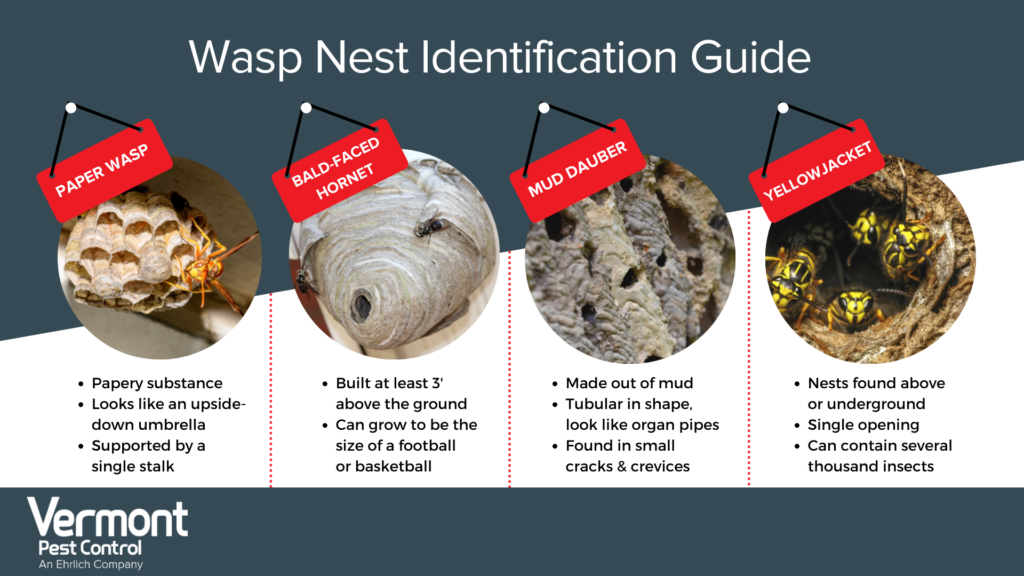
Where to Look for Wasp Nests
When searching for wasp nests, it’s essential to be vigilant and cautious to avoid potential stings. Here are common locations to look for wasp nests:
- Eaves and Overhangs: Check the eaves and overhangs of buildings, as wasps often prefer sheltered areas for nest construction.
- Attics and Crawlspaces: Inspect attics and crawlspaces, where wasps may find secluded spaces for nest building.
- Bushes and Trees: Be cautious around bushes and trees, particularly if you notice wasp activity, as some species build nests in branches.
- Garden Sheds and Outbuildings: Wasps commonly build nests in garden sheds, garages, and other outbuildings. Check corners and hidden areas.
- Under Decks and Porches: Examine the undersides of decks and porches, as these sheltered spaces are attractive to wasps for nest construction.
Regularly inspecting these locations can help detect and address wasp nests early, minimizing the risk of stings and ensuring a safer living environment. If you find a nest, it’s advisable to seek professional assistance for safe removal.
Can You Hear a Wasp Nest?
While the nests themselves remain silent, wasp activity can sometimes be audible, especially during peak hours. Here’s what to keep an ear out for:
Outside:
- Daytime Activity: Wasps are typically more active during the day, with peak activity occurring in the warmer hours. They are diurnal insects, meaning they are most active in daylight.
- Increased Buzzing Near Nests: Near the entrance of an outdoor nest, you may hear increased buzzing as wasps come and go. This can be more noticeable during their busy foraging periods.
- Visual Clues: Observing wasps flying in and out of specific areas, such as eaves, trees, or ground-level nests, can indicate the location of an outdoor nest.
Inside:
- Daytime Activity: Even if a wasp nest is inside a structure, the insects will still exhibit daytime activity. They may enter and exit through gaps, vents, or openings.
- Buzzing Near Entry Points: If wasps have established a nest within a wall void, attic, or other indoor space, you may hear buzzing near entry points such as vents or gaps in construction.
- Scratching or Rustling Sounds: In some cases, the movement of wasps within the nest may produce faint scratching or rustling sounds. These sounds may be more audible if the nest is close to living spaces.
What to Do About a Wasp Nest Near Your Home
If you notice a wasp nest on or near your property, don’t panic. For the most part, wasps will not sting unless they feel threatened. Therefore, attempting to knock down a nest on your own is never recommended. Always call your local wasp control experts for help with any type of stinging insect.
Call Vermont Pest Control today for a free quote!
Identifying Different Wasp Nests in Vermont
Serving Vermont since 1991

